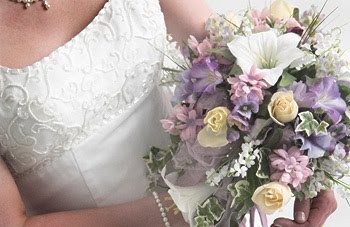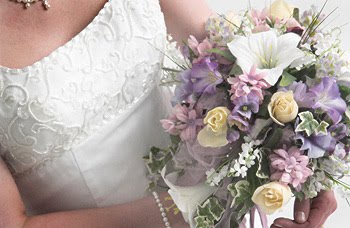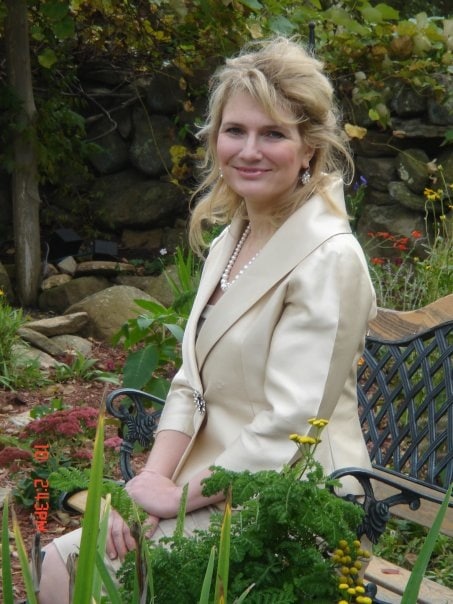 In a delightful retro-inspired book I Do! I Do!, Susan Waggoner delightfully provides descriptions of the historical evolution of the traditions of classic Western weddings. Waggoner explains that during the nineteenth century, flowers replaced grasses and herbs carried by brides in the Elizabethan era. The Victorians, who loved plants of all types, used ferns and violets and even indoor trees to decorate the wedding space. They also developed the sprays of flowers that flank the brides and grooms, even today. In contemporary American ceremonies, flowers are used throughout the wedding and reception locations—from rose petals thrown on the aisle as the bride approaches her groom to lavish centerpieces at the reception.
In a delightful retro-inspired book I Do! I Do!, Susan Waggoner delightfully provides descriptions of the historical evolution of the traditions of classic Western weddings. Waggoner explains that during the nineteenth century, flowers replaced grasses and herbs carried by brides in the Elizabethan era. The Victorians, who loved plants of all types, used ferns and violets and even indoor trees to decorate the wedding space. They also developed the sprays of flowers that flank the brides and grooms, even today. In contemporary American ceremonies, flowers are used throughout the wedding and reception locations—from rose petals thrown on the aisle as the bride approaches her groom to lavish centerpieces at the reception.
An often overlooked part of this decorative element of the wedding is the wonderful meanings attached to some of our favorite nuptial flowers. These symbolic connections can be gently woven through a bit of the ceremony language, providing another opportunity to subtly personalize the wedding day. Consider some of the “meanings” of just a few popular flowers: daffodil….devotion; lavender….luck; dark pink rose….gratitude; bluebell…..gratitude; orchid….rare beauty; lily….majesty; violet….simplicity; light pink rose….grace; iris….warmth of affection.
Some brides choose favorite flowers or those connected to their birth month.
Likewise, many cultures prize certain flowers during wedding celebrations. For example, the Japanese carry white and purple orchids, jasmine, lotus blossoms, and cherry blossoms. Greek brides carry ivy as a sign of eternal love. Czech brides use rosemary, symbolizing fertility and loyalty, in their bouquets. So as your officiant prepares your wedding ceremony, don’t forget to reflect on your flowers as a symbol of your love.
"Sarah was absolutely the most perfect combination of helping to create a wedding that was truly "us" while at the same time giving us a number of alternatives for dealings with some of the details that would otherwise have been bewildering. All of her recommendations were spot-on. She was just charming. She wove a number of elements together to create an event that surpassed our expectations."
Ted & Mika
"Sarah, was a wonderful gift from God to help perform our marriage ceremony. She so attentive to what we wanted and helped us plan our ceremony in Central Park in New York. We completely trusted her and she gave excellent advice and ideas she had for our ceremony. She listened to the important pieces that we wanted included and then worked her magic with the rest."
Mary & Nora
"Sarah Ritchie crafted a unique and exceptional ceremony, eschewing rote procedural tropes for a heartfelt and personalized experience that drew both laughter and tears from our friends and family. In a world of predictable and monotonous ceremonies, Sarah Ritchie is a breath of fresh air."
Kate & Ezra
"There is not enough words to express my gratitude for service that Sarah provided for us on our special day. We will cherish these moments for years to come. The fact that you congratulated us in our 'first' language was a very pleasant surprise. My husband's parents who flew in just for our wedding were very impressed."
Maggie & Peter
Previous
Next
Wedding Officiant Services
© 2021 WEDDINGS BY SARAH RITCHIE | DESIGN BY PASQUARIELLO DESIGN | MAJORITY OF PHOTOGRAPHY BY DANA ARNOLD & RENEE JEAN
NYC | Greenwich CT | Bedminster NJ | Princeton NJ | Westchester NY | Hamptons NY | Brooklyn | Manhattan | Connecticut | Long Island | New Jersey | Hudson Valley | Tri-State Area


